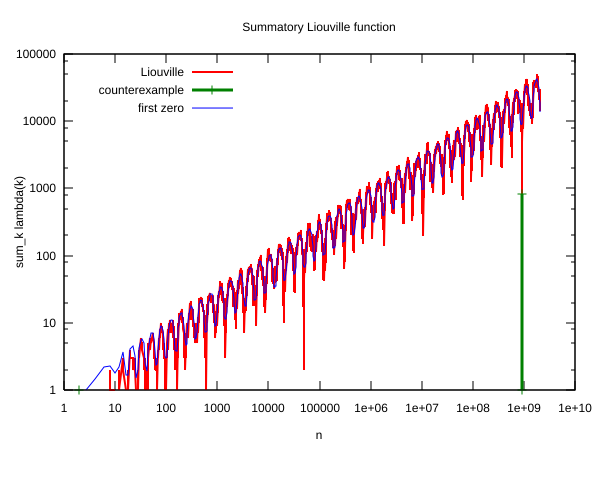Liouville-log
Logarithmic-scale graph of the summatory en:Liouville function. That is, this is a graph of
for . The summatory function is graphed in red. The green spike indicates the location where the en:Pólya conjecture fails. The Pólya conjecture fails to hold for most values of in the region of . In this region, the function reaches a maximum value of 829 at , which is represented by the height of the green bar.
The blue line indicates the contribution of the first non-trivial zero of the Riemann zeta function to the summatory Liouville function. Specifically, the blue line shows
Here, denotes the en:absolute value. The only reason for taking the max of 0.3 or the sine function is to avoid cluttering the image. The first non-trivial zero of the Riemann zeta function is located at
Relevante Bilder
Relevante Artikel
Vermutung von PólyaDie Vermutung von Pólya bezeichnet eine Vermutung aus dem mathematischen Fachgebiet der Zahlentheorie. Sie besagt, dass die Mehrheit der natürlichen Zahlen bis zu einer beliebig vorgegebenen Grenze Zahlen mit ungerade vielen Primfaktoren sind. Die Vermutung wurde 1919 von dem ungarischen Mathematiker George Pólya aufgestellt, jedoch im Jahre 1958 widerlegt. Die Pólya-Vermutung ist ein Beispiel dafür, dass eine mathematische Aussage, die für zahlreiche kleine Zahlen zutrifft, dennoch aufgrund eines Gegenbeispiels insgesamt falsch sein kann. .. weiterlesen










